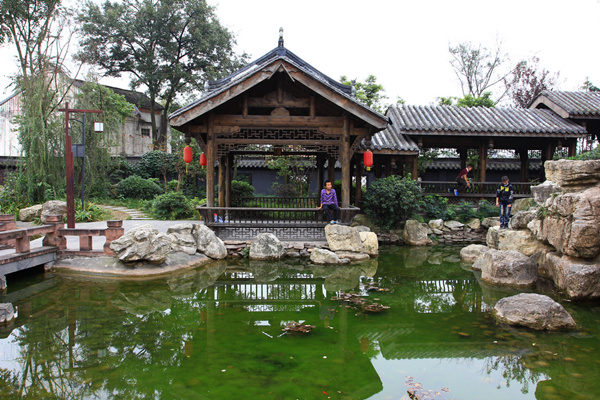 |
|
Anren was home to many of the warlords and politicians in Sichuan, who built spacious manors along the main streets or in the back alleys. Photo provided to China Daily |
Infamous estate
About 10 minutes' walk from this commercial hub lies another cluster of manors-museums. This one belongs to the Liu family, the richest of them all. The Liu estate takes up 70,000 square meters of land, of which 20,000 square meters are buildings, and it has 350 rooms.
The father of the patriarch, Liu Wencai, was a small landlord with a brewery. They had a courtyard with a dozen rooms. He had six sons, some of whom later became military commanders who controlled Sichuan and neighboring provinces. Wencai, a small trader, was assigned to the lucrative posts of tax collection as well as tobacco and liquor trade.
The southern part of the estate was built one section at a time, thus gaining the tacked-on feel and a maze-like layout. The northern part, which he built for his brother Wenhui, was carefully designed.
Liu Wencai had a dramatic life that befits this convoluted mansion. He had a military conflict with his nephew Liu Xiang and lost. His brother Wenhui, also a warlord, changed allegiance to the Communists shortly before the founding of New China, and later served as minister of forestry in the new government.
Wencai died in 1949 and was later molded into an exemplar of the evil landlord class. Some of the functions of his homestead were interpreted in that vein, but have been debunked in recent years. A cellar flooded with water was said to be a water prison cell for poor peasants, and now it's divulged that it was nothing but a warehouse for opium, which required high humidity.
A 1965 collection of clay sculptures detailing the mostly trumped-up "evil deeds" of the Liu household, which ironically served to put his name in national consciousness, is still on display, now a cultural relic of its own time. Only now you get to see up close the myriad facets of this historical personality, the place he lived and how the different public images of him took shape. It's a piece of Chinese history with its many shades of coloration.
Yang Yang contributed to this story.
If you go:
It takes a one-hour ride by bus from Chadianzi Bus Terminal in Chengdu.
|
|
|
|
|
|
|
|
